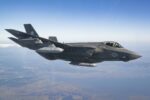India has achieved a key milestone in its indigenous armored warfare capabilities with the successful integration and firing of the Nag Mk II anti-tank guided missile (ATGM) from the Zorawar light tank prototype. This marks the first time India has demonstrated an integrated fire-and-forget missile capability from a lightweight armored platform designed specifically for high-altitude combat.
Strategic Context: Why India Needs a Light Tank
The Zorawar light tank program emerged from urgent operational requirements following the 2020 Galwan Valley clash with China. The Indian Army identified a critical capability gap in deploying heavy main battle tanks (MBTs) like the T-90 and Arjun in high-altitude regions such as Ladakh and Arunachal Pradesh. These areas demand lighter, more mobile platforms capable of maneuvering across narrow mountain passes and soft terrain at altitudes exceeding 4,000 meters.
China’s deployment of its own lightweight Type 15 tanks along the Line of Actual Control (LAC) further accelerated India’s efforts to field an equivalent or superior platform. The Defence Research and Development Organisation (DRDO), in collaboration with Larsen & Toubro (L&T), began work on the Zorawar platform under fast-track development protocols around mid-2021.
The Zorawar Platform: Design Features and Capabilities
The Zorawar is a sub-25-ton tracked light tank optimized for high-altitude warfare. It features:
- A modular armor package with STANAG Level protection scalable to mission needs.
- A hydropneumatic suspension system for enhanced mobility on uneven terrain.
- A powerpack reportedly based on Cummins or MTU engines delivering over 700 hp.
- An automatic transmission and advanced fire control system compatible with multiple sighting systems including thermal imagers.
- Primary armament includes a 105 mm rifled gun capable of firing APFSDS rounds and programmable HE munitions.
- Secondary armament includes coaxial machine guns and now—critically—integrated ATGMs.
The platform is being developed with significant input from Army Armoured Corps units stationed along mountainous frontlines to ensure operational relevance from inception. The vehicle also integrates C4I systems for network-centric warfare compatibility.
Nag Mk II ATGM Integration: Milestone Details
The recent test involved live firing of the Nag Mk II ATGM from the tank’s launcher under battlefield-simulated conditions at Pokhran Test Range. According to DRDO officials cited by Indian media outlets including The Hindu Business Line and Janes Defence Weekly, the missile successfully locked onto its target using imaging infrared (IIR) guidance and struck it at a range exceeding four kilometers.
The Nag Mk II is an upgraded variant of India’s third-generation fire-and-forget anti-tank missile system originally developed under DRDO’s Integrated Guided Missile Development Program (IGMDP). Key features include:
- IIR seeker capable of day/night all-weather targeting without external cues.
- Tandem HEAT warhead designed to defeat ERA-equipped armor.
- Top-attack flight profile for increased lethality against MBTs.
- Range envelope extended up to ~5 km when launched from elevated platforms like tanks or NAMICA carriers.
This successful integration demonstrates that Zorawar can engage both line-of-sight targets via its main gun and non-line-of-sight threats using precision-guided munitions—significantly enhancing its tactical versatility against enemy armor or fortified positions in mountainous terrain where direct fire may be limited by topography.
Industrial Collaboration and Indigenous Content
Larsen & Toubro serves as lead integrator for the Zorawar program under MoD’s “Make-I” category—a public-private partnership model emphasizing domestic design leadership with government funding support. Over 70% indigenous content is being targeted by production phase, including armor composites, electronics suites, suspension subsystems, and turret assemblies sourced from Indian SMEs under DRDO oversight.
DRDO labs involved include CVRDE (Combat Vehicles Research & Development Establishment), RCI (Research Centre Imarat), ARDE (Armament Research & Development Establishment), among others. Bharat Dynamics Limited (BDL) is expected to manufacture serial production batches of Nag Mk II missiles once certified for frontline use on both NAMICA carriers and light tanks like Zorawar.
Operational Implications for Mountain Warfare
The ability to deploy an air-transportable light tank equipped with both kinetic gunfire and precision-guided missiles offers India significant tactical flexibility across multiple sectors along its northern borders. The Zorawar can be heli-lifted by Chinook CH-47F or transported via C-17 Globemaster III aircraft into forward staging grounds inaccessible to MBTs like Arjun or T-90S Bhishma due to weight constraints or road infrastructure limitations.
This capability aligns closely with evolving Indian Army doctrines emphasizing distributed maneuver elements supported by ISR drones, loitering munitions, SHORAD systems like Akash-NG, and mobile artillery such as K9 Vajra—all forming part of an integrated response matrix against Chinese incursions or rapid mobilization scenarios along disputed Himalayan sectors.









